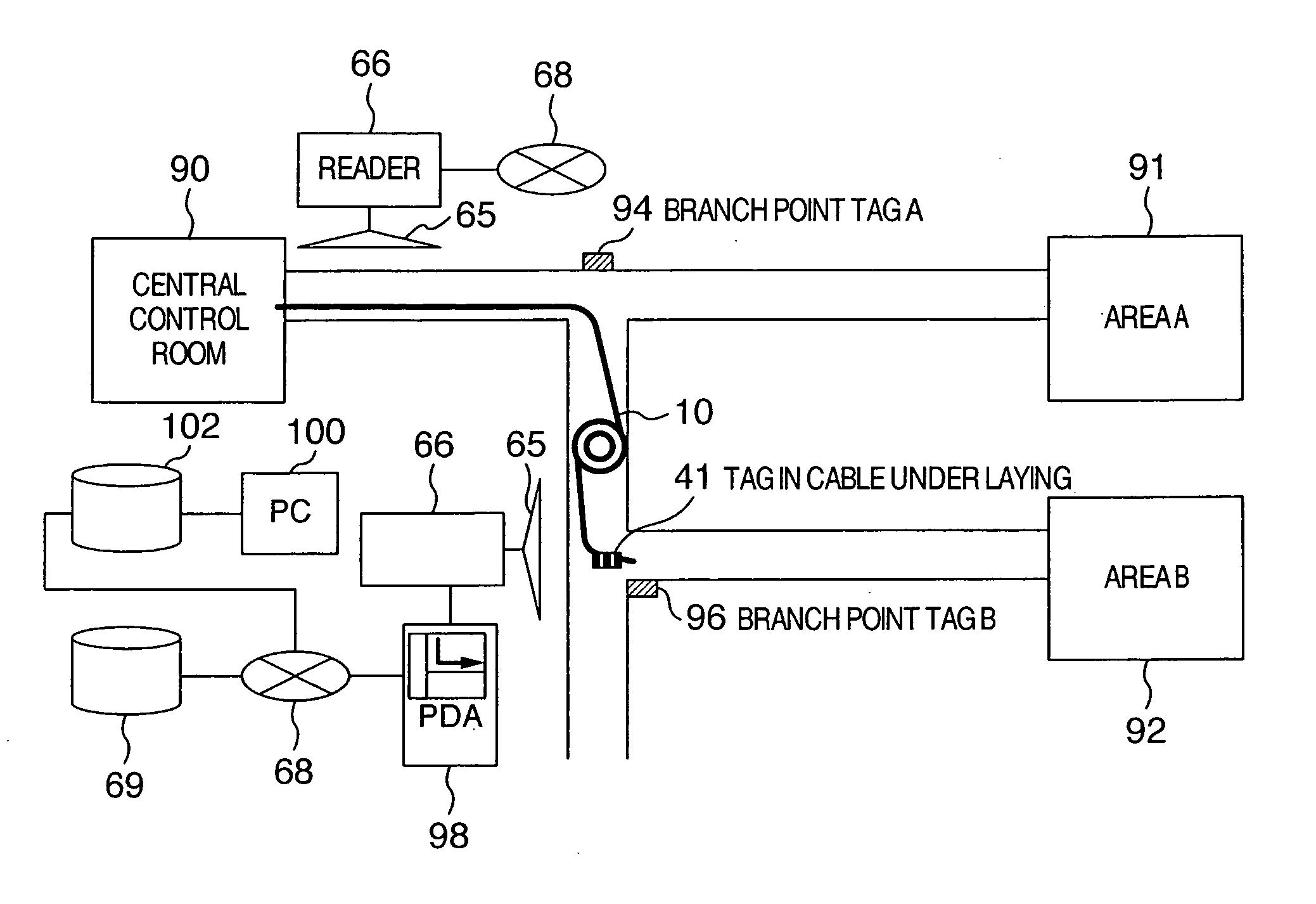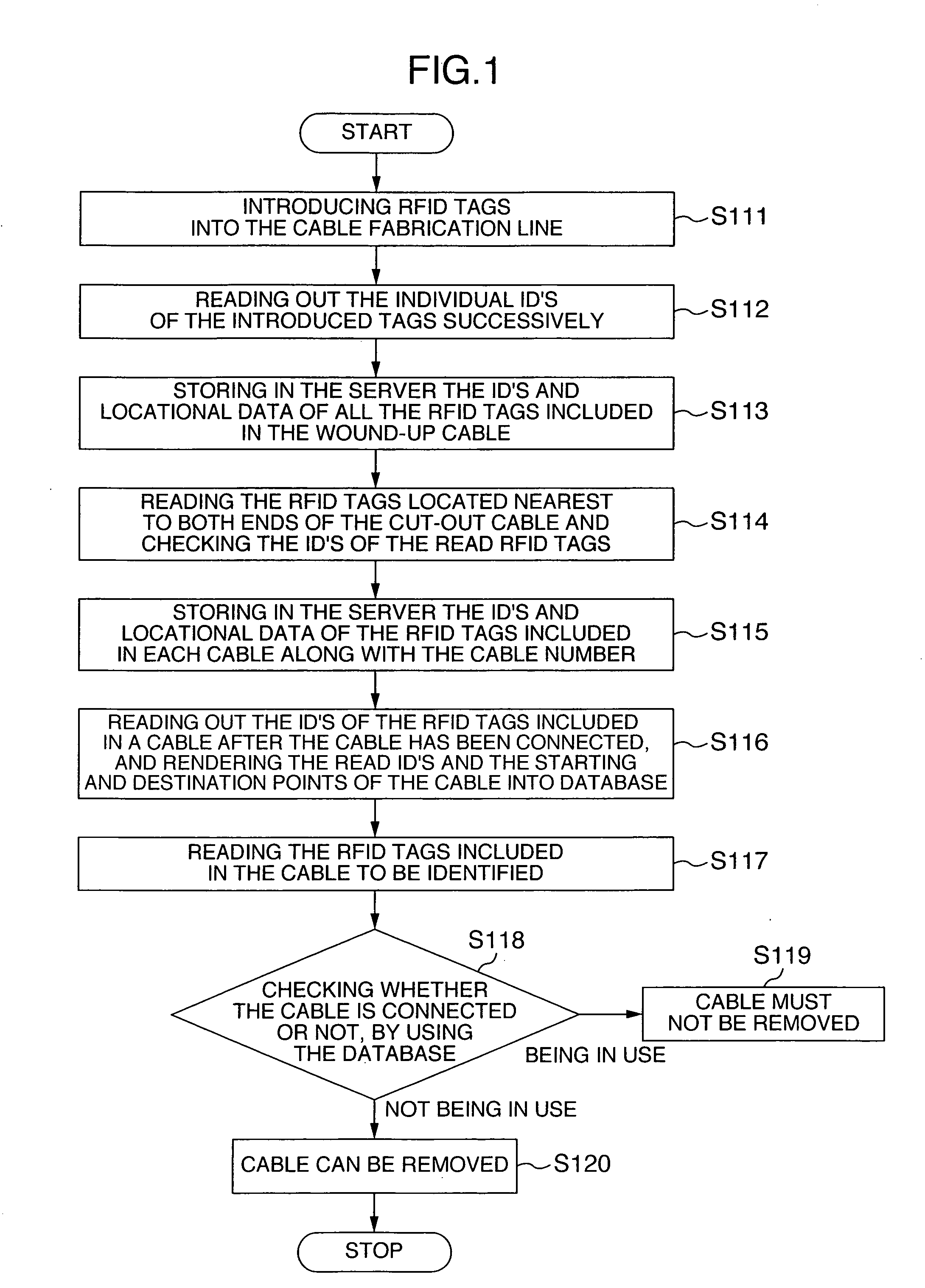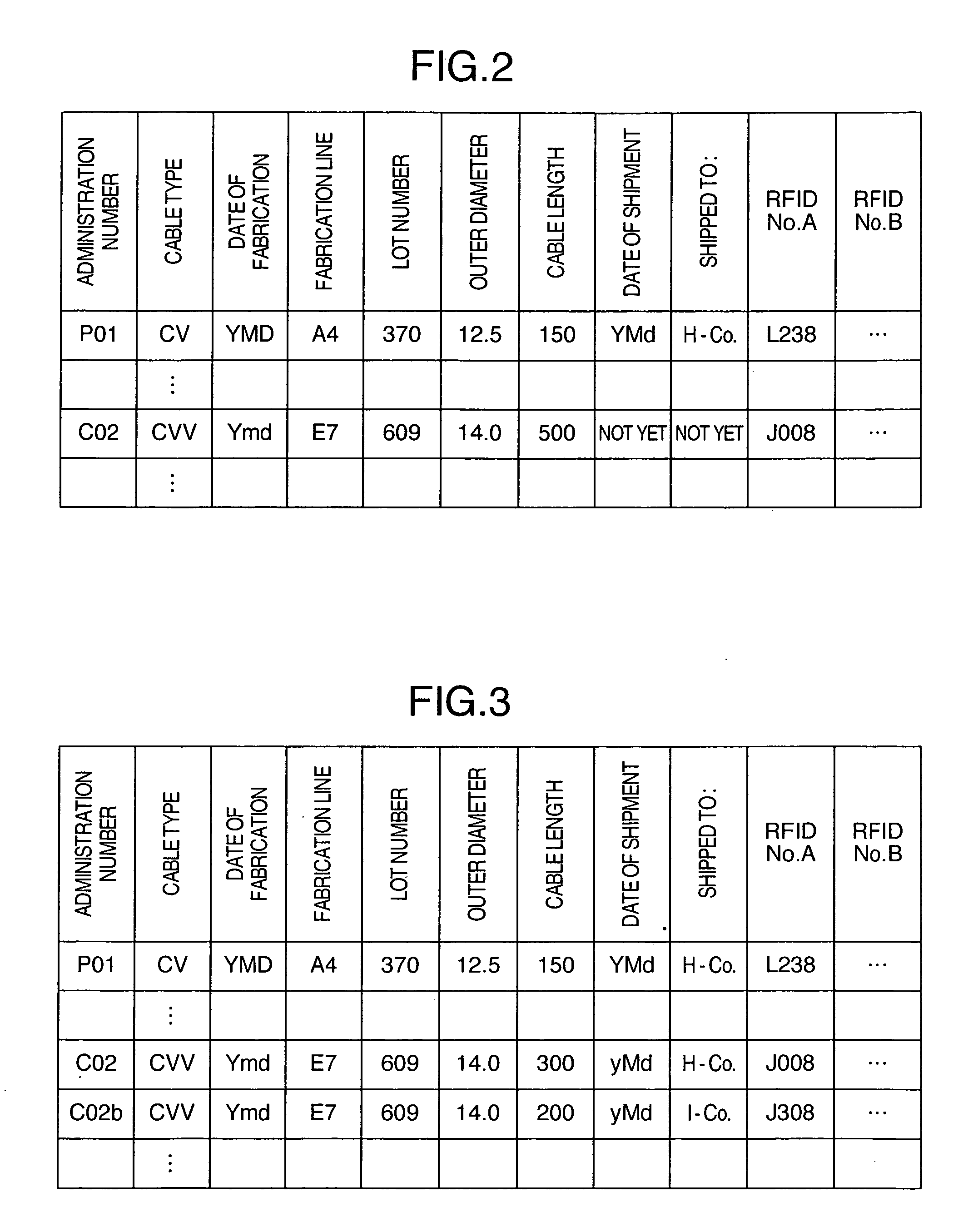Methods for manufacturing and application of RFID built-in cable, and dedicated RFID reading systems
a technology of built-in cables and reading systems, applied in the field of identification of cables, can solve the problems of limited type of most commonly used cables, difficult to distinguish one from another by visual inspection alone, and affecting the quality of printed codes,
- Summary
- Abstract
- Description
- Claims
- Application Information
AI Technical Summary
Benefits of technology
Problems solved by technology
Method used
Image
Examples
Embodiment Construction
[0041] Embodiments of this invention will now be described with reference to the attached drawings.
[0042]FIG. 1 is a flow chart illustrating how a cable identifying system used with RFID built-in cable according to this invention, is operated.
[0043] Individual steps will be described in detail in the following.
[0044] RFID tags are first introduced in a cable fabricating line (step 111) and the individual ID's of the introduced RFID tags are then read out successively (step 112).
[0045] Structural examples of a cable having RFID tags built therein, used in this invention will be described with reference to FIGS. 4, 5A and 5B.
[0046] In order to attach RFID tags onto a cable to be fabricated, RFID tags 41 are attached onto the internal structure of the cable before the last stage of cable fabricating process wherein sheath serving as the outermost layer of the cable is fabricated. For example, RFID tags may be directly stuck onto the insulation resin layer 43 of strand wires (condu...
PUM
 Login to View More
Login to View More Abstract
Description
Claims
Application Information
 Login to View More
Login to View More - R&D
- Intellectual Property
- Life Sciences
- Materials
- Tech Scout
- Unparalleled Data Quality
- Higher Quality Content
- 60% Fewer Hallucinations
Browse by: Latest US Patents, China's latest patents, Technical Efficacy Thesaurus, Application Domain, Technology Topic, Popular Technical Reports.
© 2025 PatSnap. All rights reserved.Legal|Privacy policy|Modern Slavery Act Transparency Statement|Sitemap|About US| Contact US: help@patsnap.com



